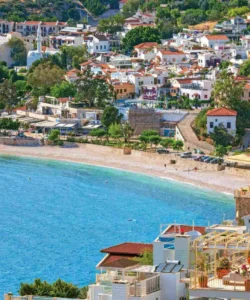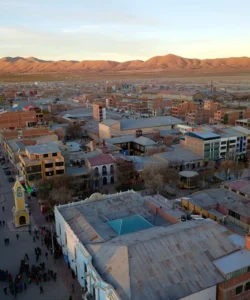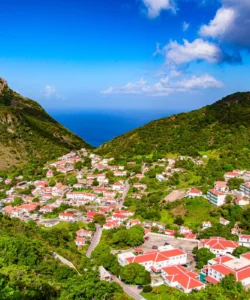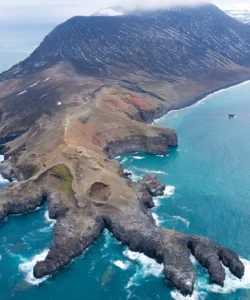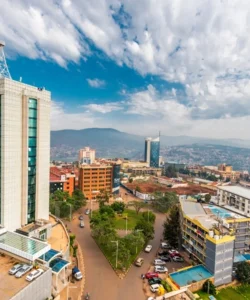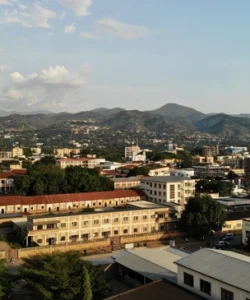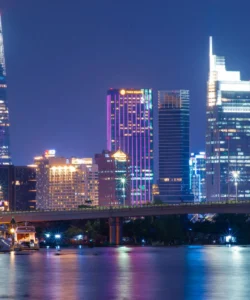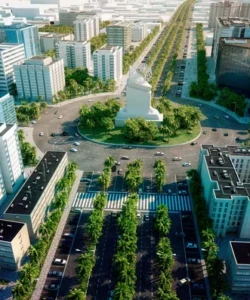Switzerland, officially the Swiss Confederation, is a landlocked country at the confluence of Western, Central, and Southern Europe. It is a federal republic composed of 26 cantons, with Bern as the seat of the federal authorities. Known for its stunning alpine landscapes, precision engineering, and rich cultural diversity, Switzerland is a popular global destination.
![]()
Area and Population:
Switzerland covers an area of approximately 41,285 km² (15,940 sq mi). As of early 2025, its population is estimated to be around 8.9 million people.
Capital:
The capital city of Switzerland is Bern.
Major Cities:
Besides Bern, other major cities include Zurich, Geneva, Basel, Lausanne, and Lucerne.
Language:
Switzerland has four official languages, reflecting its diverse cultural heritage:
- German: Spoken by the largest proportion of the population, particularly in the central and eastern parts of the country. Swiss German dialects are common.
- French: Predominantly spoken in the western parts (Romandie).
- Italian: Spoken in the southern canton of Ticino and parts of Graubünden.
- Romansh: A Romance language spoken by a small minority in the canton of Graubünden.
English is also widely understood, especially in tourist areas and business centers.
Currency:
The official currency of Switzerland is the Swiss Franc (CHF). Although surrounded by EU member states, Switzerland is not part of the European Union and maintains its own currency.
Religion:
Christianity is the dominant religion in Switzerland. As of recent data, about two-thirds of the population identify as Christian, split roughly equally between Roman Catholicism and various Protestant denominations. A smaller percentage of the population practices other religions, including Islam, or has no religious affiliation.
Attractions and Wonders:
- Natural Wonders:
- The Alps: The majestic Swiss Alps dominate the landscape, offering world-class skiing, hiking, mountaineering, and breathtaking views. Iconic peaks include the Matterhorn (Cervino), Eiger, and Jungfraujoch (“Top of Europe”).
- Swiss National Park: Located in the Engadin valley, it’s one of the oldest national parks in Europe, preserving a pristine alpine ecosystem.
- Rhine Falls: Europe’s largest plain waterfall, located near Schaffhausen.
- Lake Geneva (Lac Léman): A large, crescent-shaped lake shared with France, with cities like Geneva and Montreux on its Swiss shores.
- Lake Lucerne (Vierwaldstättersee): A picturesque lake surrounded by mountains near Lucerne.
- Lake Lugano and Lake Maggiore: Southern lakes offering a more Mediterranean flair.
- Aletsch Glacier: The largest glacier in the Alps, part of a UNESCO World Heritage site.
- Architectural Marvels & Historic Sites:
- Chapel Bridge (Kapellbrücke), Lucerne: A iconic wooden bridge, Europe’s oldest, adorned with paintings.
- Chillon Castle (Château de Chillon), Montreux: A stunning medieval water castle on Lake Geneva.
- Bern’s Old City: A UNESCO World Heritage site with medieval arcades, fountains, and the Zytglogge clock tower.
- Grossmünster & Fraumünster Churches, Zurich: Prominent churches with distinctive architecture, the latter known for its Chagall stained-glass windows.
- Bundeshaus (Federal Palace), Bern: The impressive Swiss Parliament building.
- Castle of Gruyères: A beautiful medieval castle in the charming village of Gruyères.
- Lavaux Vineyard Terraces, Lake Geneva: A UNESCO World Heritage site featuring ancient terraced vineyards with stunning lake views.
- Other Notable Attractions:
- Jungfraujoch – Top of Europe: Europe’s highest railway station, offering panoramic views, an ice palace, and various attractions.
- Mount Pilatus & Mount Titlis: Popular mountain excursions with cable cars, revolving gondolas, and stunning views.
- Gornergrat, Zermatt: A mountain ridge offering iconic views of the Matterhorn and surrounding glaciers.
- Interlaken: A popular adventure sports hub between two lakes.
- Swiss Chocolate and Cheese Factories: Opportunities to learn about and taste Switzerland’s famous culinary exports.
Architecture:
Swiss architecture is characterized by a blend of traditional alpine styles, historic urban centers, and pioneering modernism. Key aspects include:
- Traditional Alpine Chalets: Especially in mountainous regions, featuring wooden construction, pitched roofs, and often intricate carvings.
- Medieval and Renaissance: Evident in the old towns of cities like Bern, Lucerne, and Basel, with arcaded streets, historic churches, and fortresses.
- Art Nouveau and Belle Époque: Found in grand hotels and public buildings from the late 19th and early 20th centuries, particularly in resort towns.
- Modernism and Contemporary Design: Switzerland has a strong tradition of modern architecture, emphasizing functionality, clean lines, and often innovative use of materials. Notable examples include works by Le Corbusier (though French-Swiss) and contemporary architects, particularly in major cities and new public buildings. There’s a strong focus on integration with the natural landscape and sustainable practices.
Roads:
Switzerland has an excellent and highly efficient road network, known for its superb quality and numerous tunnels and bridges that navigate its challenging mountainous terrain.
- Motorways (Autobahnen/Autoroutes/Autostrade): A well-developed network of multi-lane highways (marked with green signs and white numbers) connects major cities and regions. A vignette (toll sticker) is required for all vehicles using motorways.
- Main Roads (Hauptstrassen/Routes Principales): A comprehensive network of well-maintained main roads (marked with blue signs and white numbers) connects smaller towns and villages, and are often very scenic in mountain passes.
- Mountain Passes: Famous and often challenging mountain passes (e.g., Gotthard Pass, Furka Pass, Grimsel Pass) offer spectacular driving experiences but can be closed in winter due to snow.
- Tunnels: Switzerland has some of the world’s longest and most impressive road tunnels, essential for year-round connectivity through the Alps.
Despite the challenging topography, Swiss roads are generally safe and well-signposted.
Hotels:
Switzerland offers an incredibly diverse range of accommodation, from luxurious five-star hotels and historic grand hotels to charming boutique hotels, alpine chalets, family-run guesthouses, and budget-friendly hostels.
- Luxury & Grand Hotels: Found in major cities like Zurich, Geneva, and Lucerne, and in famous resort towns like Zermatt, St. Moritz, and Interlaken, offering impeccable service and often stunning views.
- Boutique & Design Hotels: Growing in popularity, offering unique styles and personalized experiences.
- Alpine Huts (Hütten) & Mountain Lodges: Essential for hikers and mountaineers, offering rustic charm and often basic amenities in remote locations.
- Charming Guesthouses (Gasthäuser): In smaller towns and villages, providing a more traditional Swiss experience.
- Farm Stays (Agriturismo): Especially in agricultural regions, offering a taste of rural life.
Restaurants and Cuisine:
Swiss cuisine is a delightful fusion of German, French, and Italian influences, with strong regional variations and a focus on high-quality local produce.
- Cheese: Switzerland is world-famous for its cheeses.
- Fondue: Melted cheese (typically Gruyère and Emmentaler) served in a communal pot, eaten by dipping bread or potatoes.
- Raclette: Melted cheese scraped off a wheel and served over potatoes, pickles, and onions.
- Various other cheeses: Emmentaler, Gruyère, Appenzeller, Tête de Moine, Sbrinz, and many regional specialties.
- Chocolate: Swiss chocolate is globally renowned for its quality and smoothness. Major brands include Lindt, Sprüngli, Toblerone, and Cailler.
- Rösti: A crispy, pan-fried potato fritter, similar to a hash brown, often served as a side dish.
- Birchermüesli: A healthy breakfast dish of rolled oats, fruit, nuts, and yogurt, created in Switzerland.
- Zürcher Geschnetzeltes: Strips of veal in a creamy mushroom sauce, typically served with rösti.
- Bündnerfleisch: Air-dried, salted meat (usually beef) from Graubünden.
- Wurst (Sausages): A variety of sausages are popular, especially in the German-speaking regions, such as Bratwurst.
- Alplermagronen (Alpine Herdsman’s Macaroni): A hearty dish of macaroni, potatoes, cheese, cream, and fried onions, often served with applesauce.
- Desserts: Besides chocolate, try Zuger Kirschtorte (cherry cake), meringue, and various fruit tarts.
- Wine: Switzerland produces excellent wines, though most are consumed domestically. Notable regions include Valais, Vaud, and Geneva, producing varieties like Chasselas (white) and Pinot Noir (red).
- Beverages: Coffee is popular, as are various fruit juices and Rivella (a popular Swiss soft drink made from milk whey).
Switzerland’s culinary scene ranges from traditional “Stüblis” (cozy eateries) and rustic mountain restaurants to Michelin-starred fine dining establishments in its major cities.

